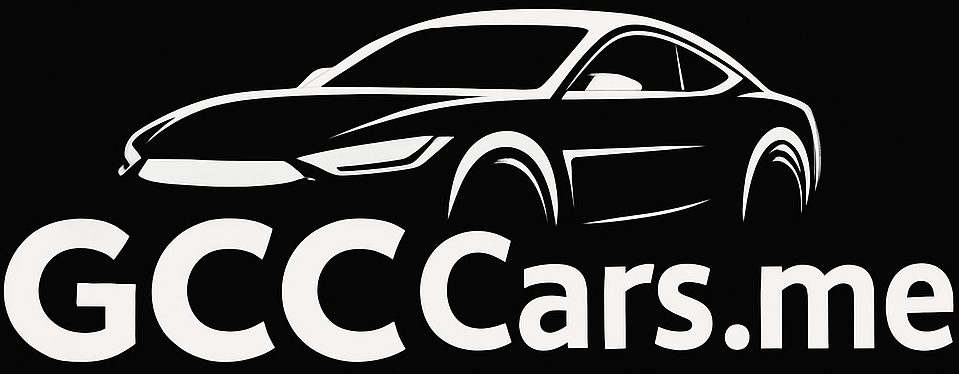Introduction
The Gulf Cooperation Council (GCC) region—comprising Saudi Arabia, the United Arab Emirates (UAE), Qatar, Kuwait, Oman, and Bahrain—is undergoing profound transformations fueled by economic diversification, technological adoption, and a rising demand for sustainable urban mobility. These developments are shaping not only the types of vehicles on the road but also the way those vehicles are designed—physically, functionally, and digitally.
Car design, once dictated solely by global automotive giants, is now influenced by regional priorities, cultural preferences, climate considerations, and futuristic megaprojects. In the coming years, the GCC is expected to evolve from a passive consumer of global automotive trends into an active participant—perhaps even a trendsetter—in future car design.
1. Climate-Informed Design: Cars for the Desert
One of the most obvious influences on car design in the GCC region is the climate. With summer temperatures often exceeding 50°C (122°F), car manufacturers and designers must prioritize thermal efficiency, air conditioning technology, and heat-resistant materials.
Key Considerations:
• Advanced Cooling Systems: Future cars will integrate highly efficient, possibly AI-controlled climate systems to adapt to outdoor conditions. Multi-zone, occupant-aware cooling features are expected to be standard.
• UV-Resistant Coatings & Materials: New-generation paints, window tints, and interior materials will be developed to withstand constant sun exposure, prevent discoloration, and reduce cabin temperatures.
• Reflective or Adaptive Surfaces: Designers may utilize adaptive exterior skins that change color or reflectivity based on temperature, reducing heat absorption.
This climate-specific innovation will influence both exterior and interior design choices, such as minimizing dark color options, expanding sunroof UV protection, and even engineering ventilated seat fabrics.
2. Cultural Identity and Customization
The GCC region places strong cultural value on luxury, exclusivity, and prestige. Car ownership is not merely utilitarian but a reflection of status, personality, and heritage. Future car designs in the region are expected to lean heavily into personalization, with manufacturers offering deep customization options to meet the unique tastes of Gulf customers.
Design Trends Driven by Culture:
• Heritage-Inspired Aesthetics: Design motifs inspired by Islamic architecture, Bedouin art, and local heritage could influence vehicle aesthetics, especially in luxury interiors.
• Exclusive Editions: Manufacturers may create GCC-specific models or trims, akin to “Middle East Editions,” with culturally resonant finishes, trims, and commemorative designs.
• Digital Customization Platforms: Virtual reality showrooms and 3D configurators will allow customers to fully personalize their vehicles online, integrating preferred colors, textures, and even digital dashboard themes.
3. Electrification and Aerodynamics
The region is aggressively pushing toward sustainability, supported by initiatives such as UAE’s Net Zero 2050 and Saudi Arabia’s Vision 2030. This has direct implications on car design, as electric vehicles (EVs) require fundamentally different packaging and styling than combustion engine vehicles.
EV-Informed Design Shifts:
• Simplified Front Fascias: Without the need for traditional grilles and intakes, EVs can adopt smoother, more aerodynamic front-end designs that enhance range and reduce drag.
• Battery Integration: Flat, skateboard-style chassis platforms allow more flexibility in vehicle shapes and cabin layouts, leading to wider, more spacious interiors.
• Lightweight Materials: To optimize EV range in high-temperature environments, future designs will use lightweight composites and aluminum alloys to reduce mass and resist corrosion.
• Solar Panel Integration: Given abundant sunshine, manufacturers may explore integrating solar panels into vehicle roofs to power auxiliary systems or enhance battery range.
4. Urban Mobility and Compact Vehicle Innovation
Gulf cities are experiencing massive urban expansion and are simultaneously investing in smart infrastructure. However, congestion and environmental concerns are pushing authorities to promote more compact, efficient, and urban-friendly vehicles.
Emerging Design Directions:
• Micro-EVs & Pods: Car designs will increasingly cater to short-distance, city-based transport—compact, two-seater EVs and autonomous “mobility pods” are likely to be deployed in urban hubs.
• Autonomous Shuttle Concepts: Cities like NEOM in Saudi Arabia are already piloting driverless vehicles. The design of these autonomous vehicles will emphasize accessibility, visibility, and modularity.
• Foldable & Stackable Cars: For efficient parking and ride-sharing, future urban cars may include foldable or stackable designs, enabling better space optimization in densely populated areas.
5. Autonomous Vehicles and Minimalist Interiors
Autonomy will profoundly reshape car interiors. In the GCC, where governments are early adopters of AI and automation, this shift is expected sooner than in many other regions.
Expected Design Shifts:
• Cabin as Lounge: Without the need for manual controls, car cabins will transform into mobile lounges, offices, or entertainment spaces. Rotating seats, retractable steering wheels, and panoramic glass roofs will define the interiors.
• Voice-Activated Surfaces: Physical buttons will disappear. Instead, natural language voice controls and AI-assisted command interfaces will handle everything from navigation to climate control.
• Mood & Wellness Features: Biometric sensors and ambient lighting will enable cars to detect driver stress and adjust cabin environments accordingly—important in a region where long drives across open desert are common.
6. Digital and Connected Design
With 5G rollout and high smartphone penetration, the future of car design in the GCC is highly connected. Cars will become digital devices, with seamless interaction between physical, virtual, and cloud environments.
Technological Design Implications:
• Dashboard Evolution: Traditional instrument clusters will be replaced by wide, seamless OLED displays that combine driving data, entertainment, and communication functions.
• Augmented Reality Windshields: AR displays will project navigation, hazard detection, and real-time traffic info directly onto windshields, especially useful in fog-prone or low-visibility conditions like desert storms.
• Over-the-Air (OTA) Design Updates: Car software and digital UI will evolve post-purchase through cloud updates, making design a continuous and adaptive process.
7. Sustainability and Eco-Conscious Design
As Gulf nations invest in green energy and circular economies, sustainability is becoming a design imperative. Consumers and governments will demand vehicles that reflect environmental responsibility.
Eco-Friendly Design Innovations:
• Recycled & Bio-Based Materials: Interiors will increasingly feature fabrics made from recycled plastics, cactus leather, or bamboo composites.
• Modular Construction: To extend vehicle life cycles, future cars may be designed with replaceable and upgradeable modules—battery, software, seating systems—rather than requiring complete vehicle replacements.
• End-of-Life Planning: Design strategies will incorporate cradle-to-cradle philosophies, enabling easier recycling or repurposing of vehicles after their use cycle.
8. Regional Car Startups and Design Hubs
There is growing ambition within the GCC to become not just consumers but creators in the automotive space.
Examples and Emerging Trends:
• CEER (Saudi Arabia): Backed by the Public Investment Fund and in collaboration with Foxconn, CEER aims to be the first Saudi EV brand. Its designs will likely reflect Saudi culture, climate, and tech priorities.
• W Motors (UAE): Known for the Lykan HyperSport, W Motors represents the region’s push into high-performance, locally-styled supercars.
• Design Incubators: Universities and innovation hubs are beginning to train the next generation of car designers. Partnerships with international automakers will bring design R&D to cities like Dubai, Riyadh, and Doha.
9. The Role of Luxury in GCC Design Futures
The GCC is one of the most lucrative luxury car markets in the world. Even as sustainability and digitization advance, the demand for premium aesthetics and performance will persist.
Luxury Design Priorities:
• Bespoke Craftsmanship: Expect growth in in-house customization departments offering one-of-a-kind finishes, tailored interiors, and artisanal materials like mother-of-pearl, gold accents, or marble trims.
• Hyper-Luxury EVs: Brands like Rolls-Royce, Lucid Motors, and Mercedes-Maybach will blend high-end electric performance with extreme comfort and exclusivity.
• Noise Management: In EVs, with less engine noise, design emphasis will shift toward acoustic comfort—active noise cancelation, soundscaping, and cabin quiet zones.
Conclusion: A Region Poised to Define, Not Follow
The future of car design in the GCC will be defined by extreme climate, cultural pride, digital integration, and a futuristic urban vision. Rather than importing global trends wholesale, the region is developing the ambition, infrastructure, and consumer demand to shape the next generation of vehicles.
As megacities like NEOM rise from the desert and governments pour billions into EVs, AI, and clean energy, car design in the GCC will evolve in directions that serve the specific needs, dreams, and identities of its people.
Automotive manufacturers, designers, and startups must look beyond adapting existing vehicles for GCC markets. They must now ask: What does a car look like when it’s designed for Riyadh, not Rome? For Dubai, not Detroit? The answers to those questions may well drive the global design narrative in the decades to come.
This article on “Car Design in the GCC region” is published and distributed by Arab Newswire. To reach a target audience with press release distribution in the automotive industry, contact us through these messaging platforms: WhatsApp +1832-716-2363, Telegram: @groupwebmedia.


